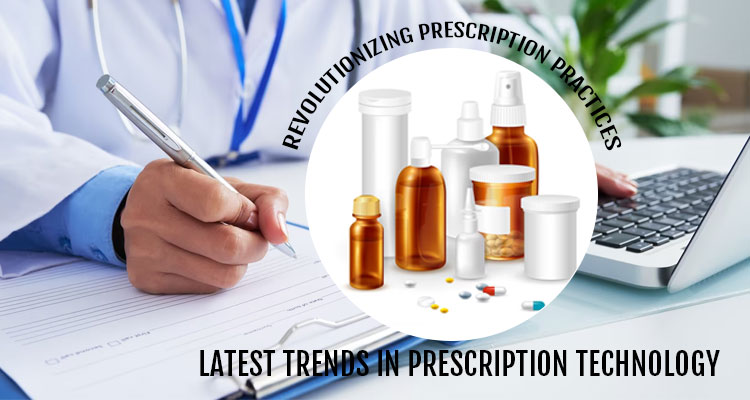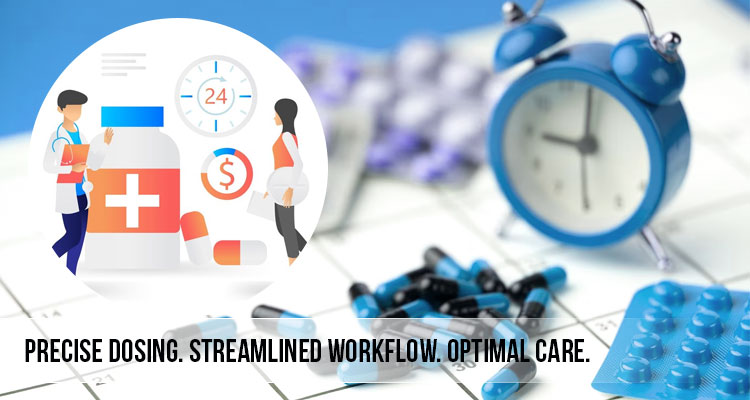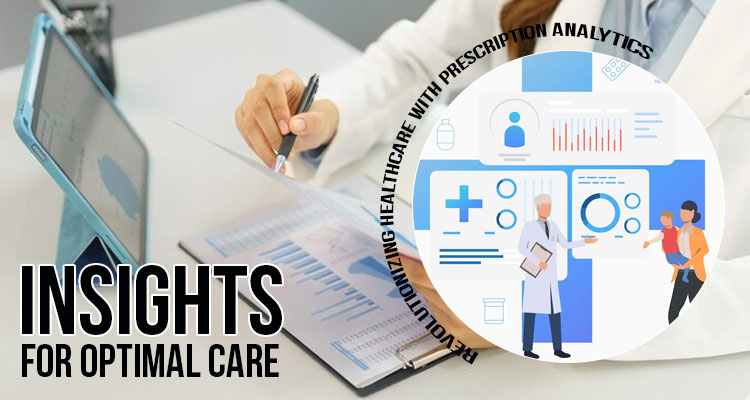In today’s dynamic healthcare landscape, technology continues to revolutionize medical practice, including prescription writing and fulfillment. Integrating innovative prescription technologies enhances accuracy, efficiency, and patient outcomes while reducing errors and costs.
This article explores the latest trends in prescription technology, their impact on medical practice, and real-world implementation examples. Electronic prescribing (e-prescribing) is a leading trend that utilizes electronic health records (EHRs) for digital prescription creation and transmission. It improves accuracy, and legibility, and streamlines the process. Automated dispensing cabinets (ADCs) enhance medication management, reduce errors, and improve inventory control.

Prescription analytics provides valuable insights into medication usage patterns, identifies trends, and detects potential drug interactions, enabling informed decision-making. Telehealth revolutionizes healthcare delivery by facilitating virtual consultations, remote prescription services, and patient monitoring.
The field of prescription technology has witnessed remarkable advancements in recent years. Here, we explore the most significant trends that are reshaping the landscape of prescription writing and medication dispensing:
Electronic prescribing, commonly known as e-prescribing, leverages electronic health records (EHRs) to facilitate the seamless transmission of prescriptions. We delve into the advantages of e-prescribing, such as improved accuracy and efficiency in prescription writing, as well as the reduction of prescription errors. Through the integration of EHR systems, healthcare providers can optimize patient safety and streamline their workflows.
Real-world Application: Below are some links to a leading e-prescribing solution provider or case study illustrating the successful implementation and impact of e-prescribing.

Automated dispensing cabinets (ADCs) play a vital role in modern healthcare facilities by automating the storage and dispensing of medications. We explore how ADCs improve security, accuracy, and accountability in medication dispensing processes, thus minimizing the risk of errors and improving patient safety. By automating inventory control and ensuring proper medication access, ADCs streamline workflow and reduce administrative burdens.
here are a few examples of leading e-prescribing solution providers and case studies that illustrate the successful implementation and impact of e-prescribing:
Prescription analytics utilizes data analytics techniques to gain valuable insights into prescription patterns, medication usage trends, and patient-specific information. We discuss how prescription analytics can improve prescribing practices by identifying high-risk patients, detecting potential drug interactions, and facilitating personalized medicine. By leveraging advanced analytics, healthcare providers can optimize treatment plans and enhance patient outcomes.

Here are some examples of pharmaceutical companies and healthcare systems that employ prescription analytics to enhance patient care and medication safety:
These companies showcase the power of prescription analytics in optimizing patient outcomes, fostering proactive interventions, and promoting healthcare cost-effectiveness.
Telehealth has emerged as a transformative trend in healthcare, enabling remote consultations, remote prescription capabilities, and continuous patient monitoring. We explore how telehealth harnesses telecommunications technology to bridge the gap between patients and healthcare providers, enhancing access to care, especially for those in remote areas. With telehealth, healthcare professionals can deliver virtual consultations, prescribe medications, and monitor patients’ progress, improving patient convenience and overall healthcare outcomes.
Here are some prominent telehealth providers that showcase the benefits and successful implementation of telehealth services:
These reputable telehealth providers highlight the widespread adoption and success of telehealth services in delivering accessible, convenient, and high-quality healthcare to millions of patients worldwide.
The latest trends in prescription technology have a profound impact on medical practice, transforming the way healthcare professionals deliver patient care. We discuss how each trend can enhance accuracy, efficiency, patient safety, and cost-effectiveness, ultimately leading to improved healthcare outcomes. By embracing these innovations, healthcare providers can optimize their workflows, streamline processes, and improve patient satisfaction.
Real-world examples illustrate the practical application of prescription technology. We present case studies that highlight successful implementations of e-prescribing, ADCs, prescription analytics, and telehealth. By showcasing these instances, we provide concrete evidence of the transformative impact of prescription technology on healthcare delivery and patient outcomes.
As we reflect on the current state of prescription technology, it becomes evident that this transformative journey is far from over. The future holds exciting possibilities for further advancements in prescription practices. Here, we discuss the potential directions and anticipated developments in prescription technology.
One of the key areas of focus in prescription technology is achieving interoperability and seamless integration between various healthcare systems. Efforts are underway to establish standardized protocols and communication frameworks that enable secure data exchange between EHRs, pharmacies, and other healthcare entities. By creating interconnected ecosystems, healthcare providers can streamline prescription processes, enhance communication, and facilitate comprehensive patient care.
AI and machine learning algorithms hold immense promise in revolutionizing prescription practices. These technologies have the potential to analyze vast amounts of patient data, identify patterns, and generate insights that can aid in more precise medication selection, dosage optimization, and personalized treatment plans. AI-driven decision support systems can assist healthcare providers in making informed prescribing decisions, reducing errors, and improving patient outcomes.
Blockchain technology presents an intriguing solution for enhancing the security and traceability of prescriptions. By leveraging the decentralized nature of blockchain, prescription records can be securely stored and accessed by authorized entities, ensuring data integrity and mitigating the risk of fraud or tampering. Additionally, blockchain-based systems can enable comprehensive audit trails, facilitating transparency and accountability throughout the prescription lifecycle.
The proliferation of mobile applications and wearable devices opens up new avenues for patient engagement and empowerment in the prescription process. Mobile apps can provide patients with convenient access to their prescriptions, medication reminders, dosage instructions, and potential drug interactions. Wearable devices, such as smartwatches, can monitor vital signs and medication adherence, generating valuable data for healthcare providers to optimize treatment plans and improve patient compliance.
In conclusion, the latest trends in prescription technology are reshaping the landscape of medical practice, offering significant benefits in terms of accuracy, efficiency, patient safety, and cost-effectiveness. The integration of electronic prescribing, automated dispensing cabinets, prescription analytics, and telehealth services holds immense potential to optimize prescription workflows and enhance patient care.
As we move forward, it is crucial for healthcare providers to embrace these technological advancements and adapt their practices to fully leverage their benefits. By staying informed, collaborating with industry experts, and embracing innovative solutions, healthcare professionals can continue to improve prescription practices, leading to better patient outcomes, reduced errors, and enhanced overall healthcare delivery.
The future of prescription technology holds even more promise with interoperability, AI-driven decision support, blockchain integration, and patient-centric mobile applications and wearable devices. By embracing these forthcoming advancements, the healthcare industry can collectively work towards a future where prescriptions are seamlessly written, filled, and managed, ultimately improving the lives of patients worldwide.